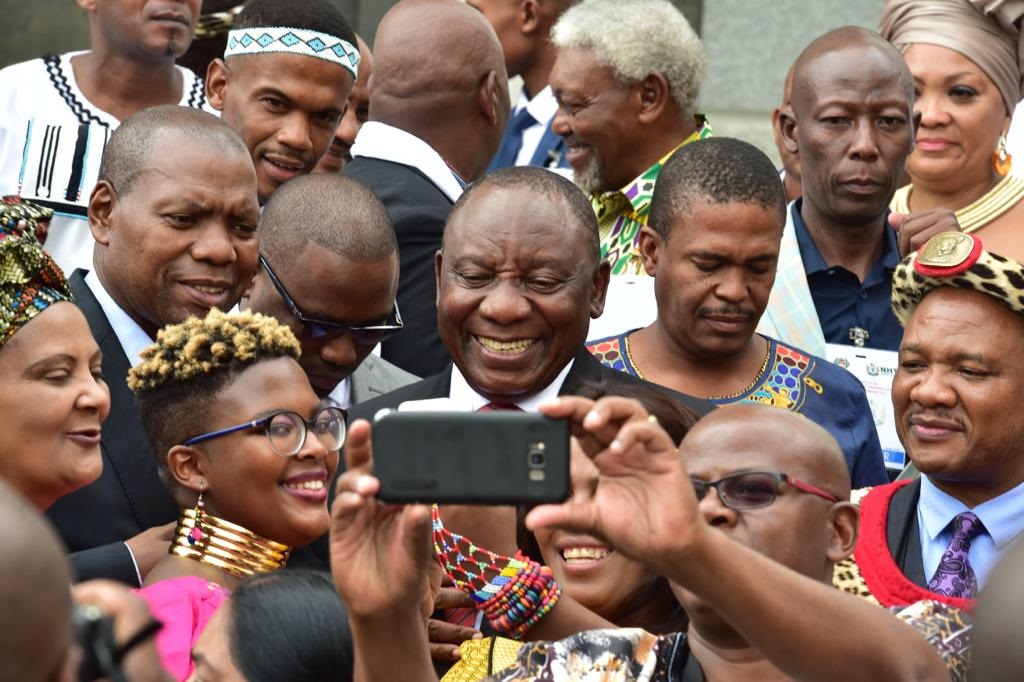
The politics of traditional leadership continues to blight the post-apartheid imagination. This awareness prompted the Mapungubwe Institute for Strategic Reflection (Mistra) to initiate, almost two years ago, a researched publication into traditional authority in South Africa. Little did it know the historical depths to which it would have to plunge to turn up conceptual clarity on the all too contentious role of the institution of traditional leadership within the post-apartheid constitutional framework.
Until now government efforts to deal with issues of traditional authority have been undermined by an approach bereft of historical context. Mistra reasoned a historical framework would be required for a deeper and broader understanding of the forces that have shaped the institution of traditional authority over time; an understanding necessary given the intractable and interminable nature of the challenges faced by this institution.
Few would deny the impact of the institution on the lives of the majority of South Africans, especially in the rural areas such as KwaZulu-Natal, Mpumalanga and Limpopo. In fact, it is not uncommon to encounter residual fealty to traditional authority among communities that have been living in urban settings for years, since chieftaincy is invariably interwoven with notions of cultural identity and ethnicity against the broad tapestry of historical memory. Traditional authority forms a symbolic universe to scores of South Africans who have historically looked to it for cultural anchorage and ontological stability and so remains a permanent feature of post-apartheid political existence.
Fewer still would deny the acerbic controversies synonymous with traditional authority that remains an apple of discord across different sectoral interests, whether the disputes are around chieftaincy succession; claims to land; business deals with mining companies without the consent of communities; or the invocation of some contested notions of traditional powers (or even recasting oral history) for current material interests.
In Chieftaincy, the State, and Democracy, historian J Michael Williams reminds us that “For the leaders of the post-apartheid South African state, there is perhaps no political institution that has caused as much contention, and as much angst, as the chieftaincy. Indeed, the more than two thousand mostly hereditary rulers that make up the chieftaincy institution have been a source of agitation for the government since the transition period in the early 1990s.”
A close inquiry into the provenance of the institution shows that the roots of this instability of traditional authority go back to the emergence of the apartheid state itself. So too do traditional leaders’ strained relations with the communities they preside over – although an even deeper probe would indict the British system of indirect rule in the second half of the 19th century colonial Natal.
The institution of traditional authority, in its current form, was shaped by the Bantu Authorities Act of 1951. Through this legislation, the nascent apartheid state – building on the inherited British concept of indirect rule – sought to co-opt indigenous political systems, practices and traditions into the envisioned apartheid system, with a dualised and hierarchical administration.
The Bantu Authorities Act of 1951 repurposed, recalibrated and distorted the traditional character of chieftaincy to the extent that those Africans who died before its promulgation would not have recognised this institution in its apartheid iteration. While its form was left in an ashen state, its powers and authority were revised to fit into apartheid’s ideological designs. In his 2005 seminal work, Democracy Compromised, scholar Lungisile Ntsebeza submits that “Traditional authorities and headmen were roped in as the extended arm of the apartheid government and were given greater administrative powers than during the segregation period.”
Through this reinvention, fabrication and distortion of chieftaincy, the act established a system in which dikgosi/amakhosi would be little more than paid administrative officers of the apartheid state. They would henceforth administer the affairs of the “tribe”; maintain law and order; prevent illegal gatherings; collect taxes; register births; and so on. Gone were the democratic elements intrinsic to the indigenous systems of governance through which subjects could hold dikgosi/amakhosi accountable, including by breaking away from the chieftaincy in the event of intransigence or deadlock. From that time, the institution, structurally, would do apartheid’s bidding, in the process pitting it against its own people for generations to come.
Given these historical distortions of the once-revered institution of African political authority, many scholars, political commentators and cultural activists are astounded by the democratic government’s logic-defying concessions to traditional authority, seeing these concessions as effectively sanctifying colonial and apartheid deformities of the institution. Critics of post-1994 government policy argue that, for example, the 2003 Traditional Leadership and Governance Framework Act and the 2003 Communal Land Rights Act make concessions to political leaders that uphold the powers they had under the Bantu Authorities Act of 1951.
A number of scholars have deplored the indulgence with which the post-apartheid state has treated traditional authorities, at the cost of communities. Professor Peter Delius, whose chapter in the Mistra book offers lucid, historicised insights into the institution of chieftaincy, advances the thesis that colonialism and apartheid turned chiefs into despotic political centres of power, equipped with roles, functions and powers unknown in precolonial times. Consequently, it was expected that South Africa’s new democracy would pass laws to rehabilitate chieftaincy, if not to scrape out its historical distortions at least to bring it into line with our democratic dispensation.
Some have even concluded that government’s complacency about an issue of such serious historical weight will eventually result in undermining the post-apartheid democratic project itself, given the ubiquitous presence of the institution. In many ways the continued debacle of the Ingonyama Trust typifies the democratic government’s unconvincing approach to the chieftaincy challenge. It took the High Level Panel Report of former President Kgalema Motlanthe to point out “the far-reaching effects” of the trust on ordinary South Africans living on the land under precarious conditions, with no security of tenure. Consequently, “the panel proposed the review of the Ingonyama Trust Act with a view to repeal or to amendment”. It remains to be seen how government addresses this legislation for the majority of rural dwellers in the former Kwa-Zulu homeland.
The inherited powers of traditional authorities have again come under scrutiny in the much publicised cases of Xolobeni in the Eastern Cape and the Bakgatla Ba Kgafela in North West. In both cases the prospects of a material windfall from mining have strained relations between traditional authorities and communities.
Mistra’s intervention through this edited volume is an attempt to help illuminate how history has shaped the institution of chieftaincy, as well as to suggest ways and means of tackling what has proven to be an increasingly polarising and baneful experience for many South Africans. It is hoped that historicised comprehension will facilitate the lessons necessary to help restore and rehabilitate the institution lodged at the centre of the self-consciousness of the majority of South Africans. After all, as Vladimir Lenin said, “History teaches!”
- Motaung is a senior researcher at Mistra.
The institute’s edited volume, Traditional Leaders in a Democracy: Resources, Respect and Resistance will be launched on February 28 in Johannesburg
Should the inherited powers of traditional authorities come under scrutiny?
SMS us on 35697 using the keyword CHIEFS and tell us what you think. Please include your name and province. SMSes cost R1.50. By participating, you agree to receive occasional marketing material




 Publications
Publications
 Partners
Partners








